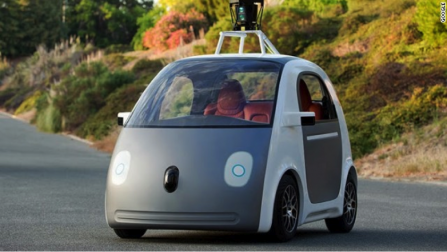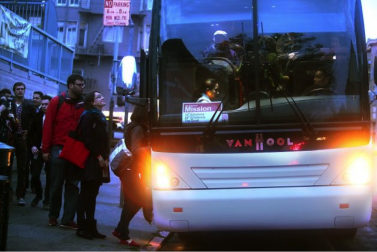The Future of Urban Transportation

Who will you meet?
Cities are innovating, companies are pivoting, and start-ups are growing. Like you, every urban practitioner has a remarkable story of insight and challenge from the past year.
Meet these peers and discuss the future of cities in the new Meeting of the Minds Executive Cohort Program. Replace boring virtual summits with facilitated, online, small-group discussions where you can make real connections with extraordinary, like-minded people.
It is increasingly clear that for growing urban populations, personal vehicle ownership is not a viable method of transportation. The laundry list of externalized costs from driving includes: air pollution, accidents, traffic congestion, noise pollution, roadway land value, etc. As populations grow, these costs grow as well.
CommuteSolutions.org quantifies indirect driving costs at about $13/day for a 16 mile commute. What does this mean for a city? Take Silicon Valley, which has a total of 98,000 car commuters daily, according to the Peninsula Press. The societal tab for car commuters comes to an annual sum of $309M. As the population density of urban areas increases, the rationale for personal vehicle ownership diminishes.
Understanding the true costs of cars on the road, private companies, public entities, and non-profits have been noodling on sustainable transportation solutions for some time. Interestingly, innovative trends in urban transportation, such as Google’s Driverless Cars, car-sharing platforms, and private commuter shuttles, are connected by a common thread: not owning vehicles.
Google’s Driverless Cars
On May 27th, Google announced its newest iteration of the self-driving car, sans steering wheel or brakes. Google’s previous version, which had all of the normal controls of a standard car, allowed the driver to take over in case of emergency. With testing, Google engineers found that it was more of a safety hazard for humans who were napping or reading to take over the wheel, stated the New York Times. Instead, the newly revealed self-driving car version solely operates with a start and stop button.
Google co-founder Serge Brin discussed the long-term vision of their self-driving cars in an interview with the New York Times, “Regardless of Google, I think the right model for most of the world will be not through vehicle ownership,” he said. “These should be provided as services for the most part.” Instead of car ownership, self-driving vehicles could be hailed by smart phone as a means of on-demand, shared, personal transportation within cities. This vision has the potential to change the transportation industry as we know it.
Ridesharing, Carsharing, and Resource Efficiency
Transportation Network Companies (TNCs) connect non-commercial drivers to passengers via an online platform, enabling drivers to provide rides with their personal vehicles. TNCs are the Lyfts, Ubers, and SideCars who are creating a new market structure for the transportation industry in urban environments.
This distributed model of ridesharing fundamentally changes the concept of car ownership. What was once privately owned property is now a means to revenue in the burgeoning sharing economy. TNCs leverage the resource of unused passenger space in cars to efficiently transport urban dwellers.
TNCs emerged in the wake of carsharing services such as Zip Car and City Car Share. Through a membership model, urbanites can have access to cars on demand, without incurring the costs of owning a car. This resource efficiency eliminates the opportunity cost of parked vehicles. It fills the user need of transportation by car through a service.
The rise of ridesharing and carsharing has disrupted the assumption that in order to get around by car, you must own or lease one. By shifting this belief, there is the ability for resource efficient, distributed models of transportation to emerge.
Private Commuter Shuttles
While public transportation, carsharing, and ridesharing are means for transportation within urban areas, there is still the question of the commute to work. Private Commuter Shuttles have emerged as a solution to this last-mile transportation need. Large companies, such as Google, Apple, Yahoo, etc. are investing in fleets of large buses that connect urban dwelling employees to the office. This alternative removes cars from the road, allows employees to be productive on the commute with wi-fi enabled busses, and reduces the stress of sitting in traffic.
In Apple’s 2000 census, they reported that about 11% of employees were using private shuttles to commute to work. By 2012, The Verge reported 1/3 of Google employees using private shuttles and New York Magazine quotes Facebook stating that 40%-47% of employees using alternative means of transportation to work, including their six shuttles.
Private shuttles show that employers are investing in alternatives to car commuting. While this solution may not be feasible smaller organizations that don’t have the capital on hand (Google quoted each private shuttle costing over $500,000), there may be creative commuter solutions developed for clusters of organizations or business parks. Innovative companies are capitalizing on the benefits of employees not commuting by car, further divesting urban transportation from personal vehicle ownership.
Discussion
Leave your comment below, or reply to others.
Please note that this comment section is for thoughtful, on-topic discussions. Admin approval is required for all comments. Your comment may be edited if it contains grammatical errors. Low effort, self-promotional, or impolite comments will be deleted.
4 Comments
Submit a Comment
Read more from MeetingoftheMinds.org
Spotlighting innovations in urban sustainability and connected technology
Middle-Mile Networks: The Middleman of Internet Connectivity
The development of public, open-access middle mile infrastructure can expand internet networks closer to unserved and underserved communities while offering equal opportunity for ISPs to link cost effectively to last mile infrastructure. This strategy would connect more Americans to high-speed internet while also driving down prices by increasing competition among local ISPs.
In addition to potentially helping narrow the digital divide, middle mile infrastructure would also provide backup options for networks if one connection pathway fails, and it would help support regional economic development by connecting businesses.
Wildfire Risk Reduction: Connecting the Dots
One of the most visceral manifestations of the combined problems of urbanization and climate change are the enormous wildfires that engulf areas of the American West. Fire behavior itself is now changing. Over 120 years of well-intentioned fire suppression have created huge reserves of fuel which, when combined with warmer temperatures and drought-dried landscapes, create unstoppable fires that spread with extreme speed, jump fire-breaks, level entire towns, take lives and destroy hundreds of thousands of acres, even in landscapes that are conditioned to employ fire as part of their reproductive cycle.
ARISE-US recently held a very successful symposium, “Wildfire Risk Reduction – Connecting the Dots” for wildfire stakeholders – insurers, US Forest Service, engineers, fire awareness NGOs and others – to discuss the issues and their possible solutions. This article sets out some of the major points to emerge.
Innovating Our Way Out of Crisis
Whether deep freezes in Texas, wildfires in California, hurricanes along the Gulf Coast, or any other calamity, our innovations today will build the reliable, resilient, equitable, and prosperous grid tomorrow. Innovation, in short, combines the dream of what’s possible with the pragmatism of what’s practical. That’s the big-idea, hard-reality approach that helped transform Texas into the world’s energy powerhouse — from oil and gas to zero-emissions wind, sun, and, soon, geothermal.
It’s time to make the production and consumption of energy faster, smarter, cleaner, more resilient, and more efficient. Business leaders, political leaders, the energy sector, and savvy citizens have the power to put investment and practices in place that support a robust energy innovation ecosystem. So, saddle up.









A quick correction: Lyft, Uber, and the like are not “Rideshare”. They’re confederated taxi services. Rideshare is a federally recognized term synonymous with “Alternative Transportation,” “Commuter Choice,” “Sustainable Transportation,” etc. Rideshare refers to carpooling, vanpooling, bus riding, train riding, bicycling, and walking for transportation.
While Lyft, Uber, and the like reduce the need to own a car (or rent a car while away from home), their businesses do not reduce vehicle trips and thus do not reduce GHG emissions.
They are no different than taxis except for their regulatory status and their very convenient methods of hailing one of their drivers.
Dear Shaina,
When googling “Personal Urban Transportation” I found your article. You may be interested in the ultralight electric vehicle I am developing for Asian Megacities, may be also for “Three Mile Transportation” in the West. Here is my first video:
If you reply by email I can email a documentation.
Thank you for your interest — best regards from Switzerland,
Walter Janach
Here a new and better video of the same ultralight electric vehicle made in Luzern Switzerland:
http://youtu.be/ci_0AnFNIbM
Discussing the future of transportation without any reference to land use is pointless. Discussing only passenger transportation in terms of motorised vehicles is equally short sighted. Perhaps if you had started your article by stating that you are only interested in discussing what to do in a few areas of USA cities which are overwhelmed by car dependence – and want to stay that way – then the rest might be valid.
Much of the current American transportation planning is concerned simply with road congestion at peak commuting periods and disregards all the other reasons people make trips, and ignores why so many of those currently are made in single occupant vehicles.
We need better urban areas that are designed as places for people – not their transportation devices. This means rethinking ideas like exclusive zoning, building mainly single family homes on large lots on cul de sacs. If we had places where people could do most of their daily activities within walking distance, and had access to both safe cycling routes and frequent, convenient public transit, much car ownership would simply melt away. And it is not hard to achieve this, even in America.
Driverless cars and exclusive private shuttles ignore a vast segment of the population, and almost guarantee civil unrest by those whose needs are unmet.